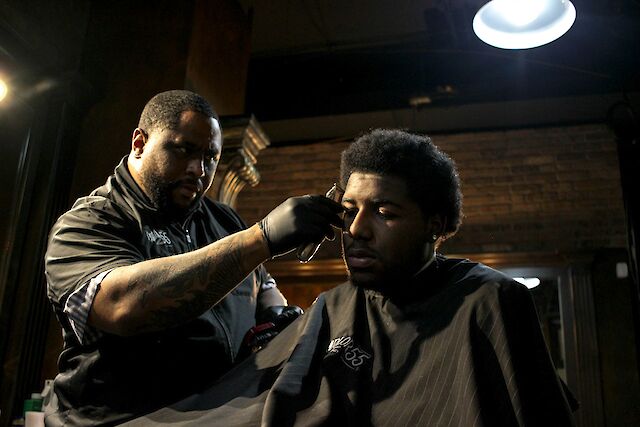Kristan Sayers / 8 months ago
How to Become a Barber (aka the Neighborhood Unicorn)

Being a barber is different.
It’s not just about cutting hair. It’s about presence. Influence. Trust.
When you do it right, you become the neighborhood unicorn. The rare one. The one everybody knows—even folks who don’t sit in your chair.
So, how do you get there?
Let’s talk about what it actually takes to become a licensed barber in Michigan, and what separates someone who just cuts hair from someone who truly lives the craft.
1. The Traditional Route: Barber College
This is the path most people think of first. You find a licensed barber college, you enroll, you show up every day, and you get trained to pass the state licensing exam. That’s what I did. Back in 1998, I moved 110 miles to East Lansing to attend the Lansing College of Barbering and Styling. Didn’t know a soul. Just knew I wanted to be great at this.
Here’s what you need to know:
- Schools can cost up to $18,000 (some less, some more).
- You won’t be making money while you’re in school.
- But you’ll get structure, support, and a roadmap. They track your hours, guide your progress, and prep you for both the written and practical state exams.
It’s a solid foundation. And honestly, if you’re someone who does well with accountability and routine, this route can be a great fit.
2. The Hustle Route: Apprenticeship
This is the hands-on, street-smart way to get your license. In Michigan, you can become a licensed barber through an apprenticeship. It’s cheaper—usually under $2,000—but it demands more from you.
You’ve got to:
- Find a licensed barber who’s approved to take on apprentices.
- Be in a shop that qualifies as a licensed training facility (which sometimes means helping them get the right setup).
- Track your own hours and make sure you hit the required total.
- Study for your licensing exam on your own time.
And the real advantage? You’re learning on the floor—cutting real heads, picking up real game, and maybe even making some real money along the way. But the catch is this: it’s on you. No one’s holding your hand. You’ve got to want it bad enough to self-manage and stay consistent.
3. The Shortcut (That You Shouldn’t Take)
Some folks try to skip the process. They buy clippers, start cutting in their kitchen, and hope nobody says anything. And listen—I get it. When you’re hungry to build something and money’s tight, shortcuts look real good. But here’s the truth:
- You’re breaking the law.
- You can’t get insurance or work in a legit barbershop.
- You’re putting your clients at risk (and yourself too).
- And the respect? You’ll never fully earn it without that license.
Every real barber knows—getting licensed isn’t just about legality. It’s about learning the craft, honoring the game, and understanding the responsibility that comes with holding clippers in your hand.
So… Which Route Should You Take?
It depends on you. If you need structure, go to school.If you’ve got the grind and the discipline, find a mentor and do an apprenticeship. Either way, just get licensed. Because that’s what makes you official. That’s what gives you the confidence to charge your worth, move how you want, and build a name people respect. That’s what makes you the neighborhood unicorn.
Share This Article
About The Author




